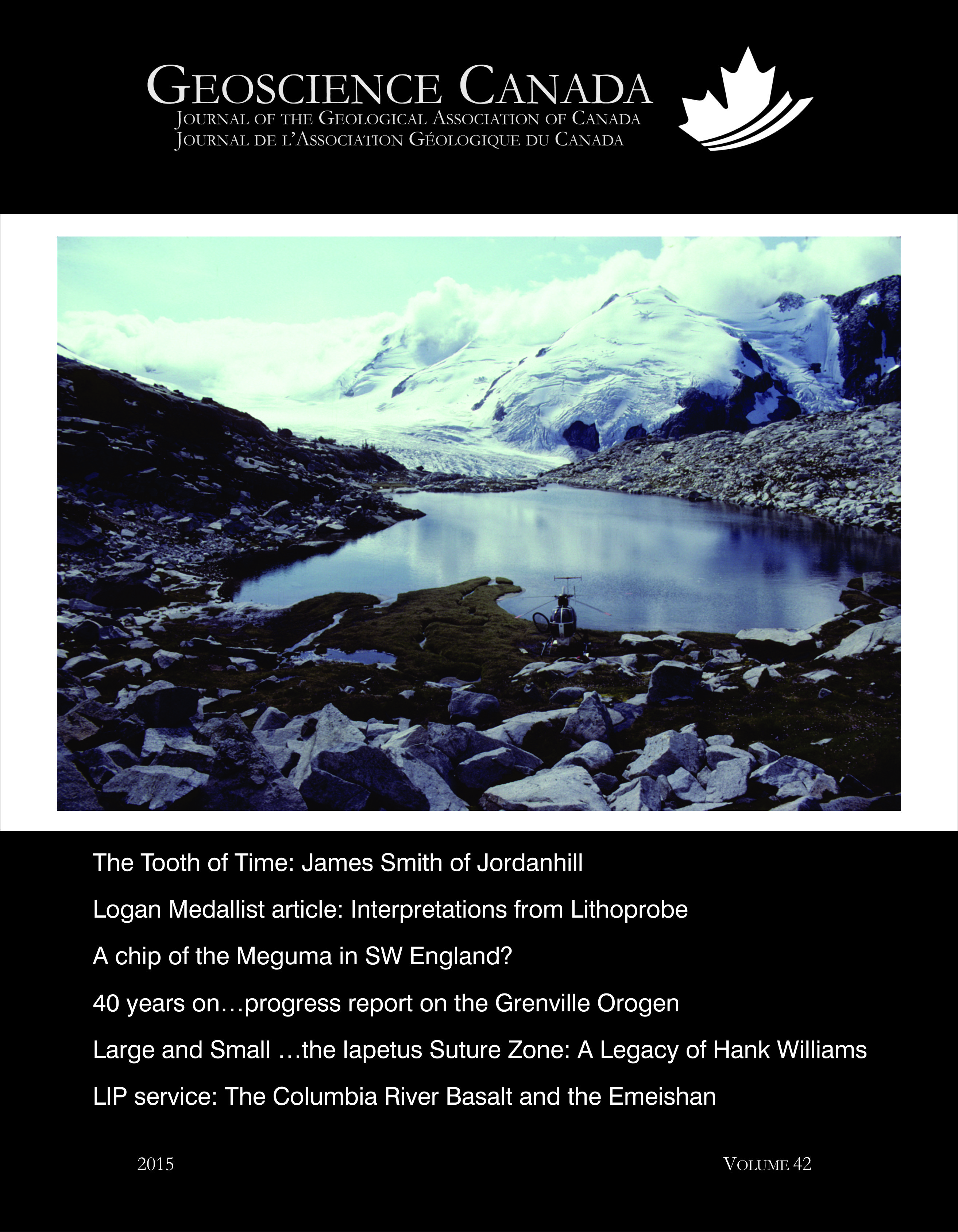From Large Zones to Small Terranes to Detailed Reconstruction of an Early to Middle Ordovician Arc–Backarc System Preserved Along the Iapetus Suture Zone: A Legacy of Hank Williams
Publié-e 2015-02-18
Comment citer
Résumé
The Annieopsquotch accretionary tract (AAT) comprises a thrust stack of Lower to Middle Ordovician arc and backarc terranes that were accreted to the composite Laurentian margin of Iapetus during the Middle to Late Ordovician. Geological relationships suggest that the constituent terranes of the AAT initially formed outboard of the composite Laurentian margin in an extensional arc that underwent multiple rifting episodes prior to its accretion. The initiation of AAT magmatism led to the development of Tremadocian to Floian supra-subduction zone ophiolites (481 to 477 Ma) with organized ridges indicated by the presence of well-developed sheeted dyke complexes. This spreading centre propagated through a fragment of Laurentian crust and separated it from the composite Laurentian margin. This Laurentian crust fragment then formed the basement to subsequent Floian to Darriwilian AAT arc magmatism. The Floian arc (473 to 468 Ma) underwent extensive rifting indicated by organized spreading in the Lloyds River backarc basin, which was floored by juvenile backarc ophiolitic crust (472 Ma). The establishment of the Darriwilian arc (467 to 462 Ma) was in part coeval with yet another stage of rifting. Darriwilian magmatism is characterised by significant along-strike variability, ranging from continental to primitive calc-alkaline arc to tholeiitic backarc-like magmatism. The diversity of Darriwilian magmatism can be attributed to fragmentation and magmatic reworking of Laurenian-derived basement along strike in the same arc undergoing disorganized spreading. The development of the AAT is interpreted to be similar to that of the modern Izu – Bonin – Mariana arc in the western Pacific.
SOMMAIRE
La bande d’accrétion d’Annieopsquotch (AAT) est constituée d’un empilement de chevauchements de l’Ordovicien précoce à moyen, et de terranes d’arc et d’arrière-arc qui se sont accrétés à la marge composite laurentienne japétienne à l’Ordovicien moyen à tardif. Les faits géologiques relevés portent à penser que les terranes constitutifs de l’AAT se sont constitués à l’extérieur de la marge laurentienne dans un arc d’extension qui a subi de multiples épisodes de rifting avant son accrétion. L’initiation du magmatisme de l’AAT a mené au développement de zones d’ophiolites de supra-subduction du Trémadocien au Floien (481 Ma à 477 Ma), avec des crêtes ordonnées mises en évidence par la présence de complexes de tapis de dikes bien développés. Ce centre d’extension s’est propagé à travers un fragment de la croûte laurentienne, et l’a ultimement séparé de la marge composite laurentienne. Et, du Floien au Darriwilien, ce fragment de croûte laurentienne a servi de substratum au magmatisme d’arc de l’AAT. Au Floien (473 Ma à 468 Ma), cette zone d’arc a subi un important rifting, comme l’indique la distension ordonnée du bassin d’arrière-arc de Lloyds River, lequel a servi de semelle à une croûte ophiolitique d’arrière-arc (472 Ma). La mise en place de l’arc au Darriwilien (467 Ma à 462 Ma) a coexisté pour un temps avec un autre épisode de rifting. Le magmatisme darriwilien est caractérisé par une variabilité de composition importante parallèlement à sa direction, passant d’une composition d’arc continental à celle d’arrière-arc primitif calco-alcalin jusqu’à une composition de magmatisme de type tholéiitique d’arrière-arc. La diversité du magmatisme darriwilien peut être attribuée à la fragmentation et au remaniement magmatique de la croûte d’origine laurentienne parallèlement à la direction d’un même arc subissant une distension désordonnée. Nous proposons que le développement de l’AAT a été similaire à celui de l’arc moderne Izy–Bonin–Marianne du Pacifique occidental.
